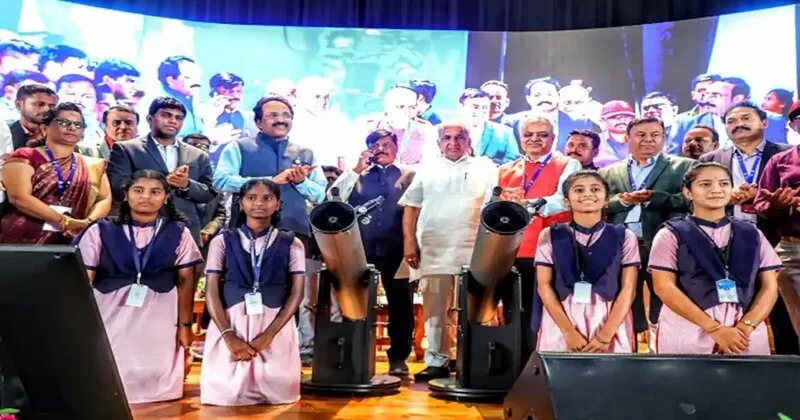
The Indian Space Research Organisation (ISRO) has set a bold goal of sending humans to the Moon by 2040, a mission estimated to require an investment of around ?1.5 lakh crore. ISRO Chairman S. Somnath discussed the mission’s financial demands during an interaction with over 2 lakh students from CRIS Educational Institutions. Responding to a question about funding, he acknowledged the high costs of lunar exploration but emphasized that India has the capability to achieve this complex task, drawing optimism from the technological advancements that could make it feasible and beneficial for India’s economy in the long term.
Somnath addressed the potential benefits of space exploration investments for ordinary citizens, noting that ISRO generates ?2.5 for every rupee spent. With India’s annual space budget around ?12,000 crore, a relatively small fraction of the global $500 billion space market, India’s stake is currently only 2%. Somnath highlighted ISRO’s ambition to expand this share significantly, envisioning a future where India has 500 satellites in orbit, launching rockets weekly to support critical sectors like internet services, environmental monitoring, and real estate. Among the priorities is enabling mobile internet connectivity via satellites, an area where ISRO is actively working.
Furthering its space mission goals, ISRO is collaborating with private companies, attracting interest from U.S. and European firms looking to leverage India’s cost-effective space programs. These partnerships are expected to enhance satellite construction and communication services. The event also saw Minister H.C. Mahadevappa encouraging students to pursue science, emphasizing its role in eradicating superstitions. As part of promoting scientific interest, the state government has distributed telescopes to hundreds of residential schools, symbolically presenting them to two schools to foster a hands-on interest in astronomy among students.

Post Your Comments